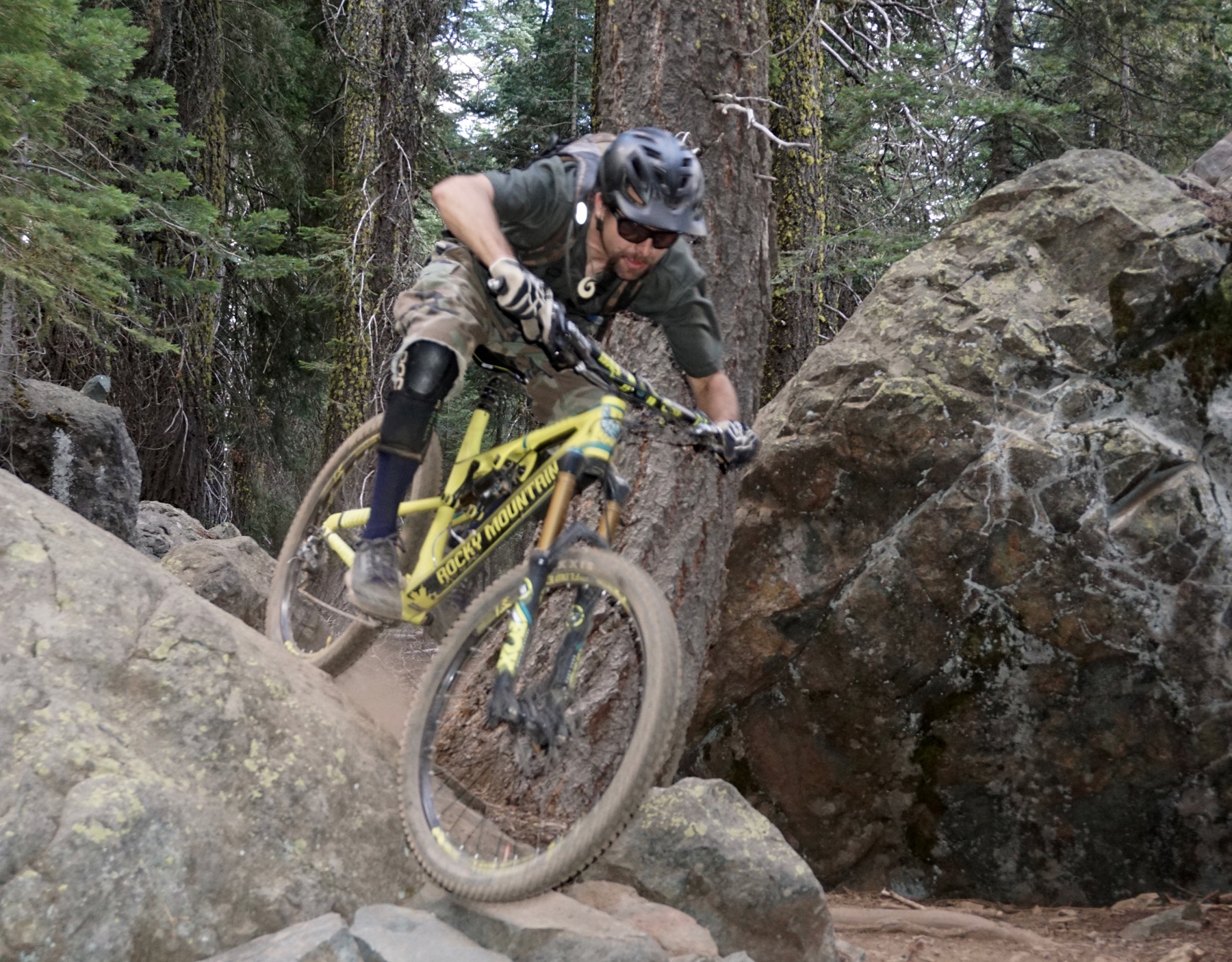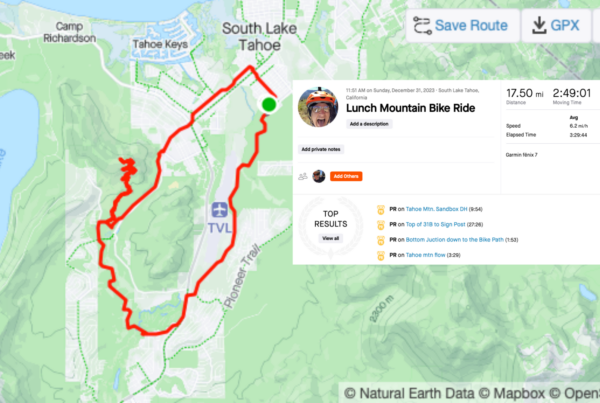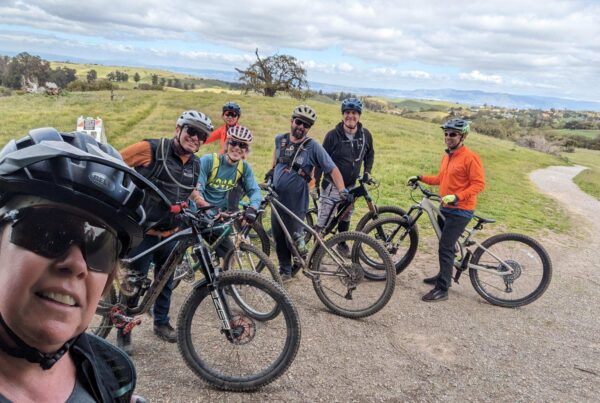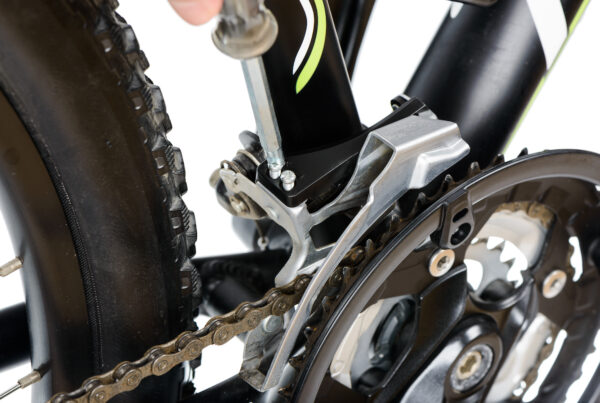Riding On The Offensive
For me, the number one focus as a rider is what my next move is. I hear riders talking about being ready or staying in balance as their priority and what they feel is most important when on the bike. And those are very important, but if that’s your number one focus, it may lead you to not always being aggressive on the bike. Looking ahead and being prepared for your next move is what will allow you to charge with certainty down the trail. Ultimately, your mountain biking body position affects how fun you have.
Your body position dictates your next action. If I ride being focused on what I need to do next or what the trail options are, I can move down the trail more efficiently. I never want to let the trail make the decision for me. Or as I like to say, make me ride defensively. As soon as you do, you’re getting taken for a ride not going for a ride.
While hands on mountain bike skills coaching is your best bet at learning how to ride better, reading about tips and techniques can also significantly help as well. Learning through visual, auditory, and kinesthetic styles will reinforce the skills you are trying to absorb. This is something I address in more depth during my skills clinics. So read on and I hope it helps you Ride Better.
How To Ride On The Offensive
Physical and Mental Level: Ask yourself how do I feel? This will determine how aggressive you should be riding that day.
Trail: Look at the trail to see what its challenges are. Do they exceed your Mental and Physical state?
Environment: Take into consideration temperature, weather variables and distances being traveled.
Now, after taking these into consideration, let’s look at how we hold ourselves on the bike. Our position is forever changing as it goes through the variables a trail can throw at you. We need to be ready, in balance, or as I like to say, “on the offensive”. I also use the term attack position, as it has a more aggressive tone.
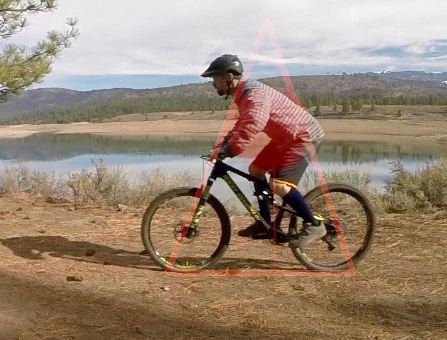
- The picture above shows what your middle range of motion is for a good Offensive riding position.
- The goal for this position is to maintain a centered or neutral position on the bike.
- As you look at the above picture, notice where the COM (center of mass) is.
- Weight is in line with the Bottom Bracket. This is what we would call LOG (line of gravity).
- It is almost centered in the wheelbase, or the BOS (base of support).
- Finally, look at where the eyes are focused and what the head position is.
Why is the COM important?
With effective movement of the COM, you can maintain balance and affect the stability of the rider on the bike. This is where mountain biking body position really comes into play. Raise the COM and you decrease the stability of a rider but have better control over balance. Lower the COM and increase the stability of the rider but lessen the control over balance.
If you think of an object with the same BOS and weight but different points for their COM, you will have different results. The lower COM will be harder to push over. But once you get it moving, it will be harder to maintain its balance. The higher the COM will move easier in turn will be easier to balance because of the lower force needed to adjust the balance. The triangle helps visualize this. The lower you are, the more room you have to move inside of the triangle, equaling more stability. Whereas if you are high up in the triangle, it would be easier to move outside of it and therefore reduce stability and balance.
If we think about maintaining our balance on the bike and let the bike pivot underneath us, we will be able to stay in that Attack Position. This allows us to stay unaffected by the bikes movement and stay on the Offensive. Let’s start at the base of connection, with the Feet and move up to the Head.
Feet:
Maintain a pedal position perpendicular to our LOG, with the ball of the foot slightly in front of the pedal spindle. Also thinking of dropping the front foots’ heel and pointing the back foots’ toe. The back foot will naturally do this if you are centered and moving consistently from a low attack position to your taller attack position. You can also see this in the picture above.
Knees/Legs:
The knees will have a slight bend to them when in a tall attack position and a deep bend when low in the attack position. Keeping them flexed and moving is necessary to keep the bike on the ground and tracking the terrain. The knee should also be held away from the bike in an almost bowlegged position. This will help when we need the bike to move side to side. It also allows us to load and pressure the bike without the natural lock out the knees give when forced inward.
Hips:
The hips being the base of the core are where most of the power comes to make the more dynamic moves happen. Examples of these would be manuals, high speed corners, j-hops, rear wheel lifts to the side, and hard braking. Right now, the hips are just a fulcrum or hinge for the core and upper body. As the knees bend, the hips have to fold or hinge to allow the core to stay centered over that point of contact. If you just bent your knees and did not hinge and lower your chest, your weight will push backwards. You can feel this by just trying this motion on flat ground while standing. Also, it’s vice versa if you just hinge forward and all your weight shifts forward. If you move them equally, you will find your balance point.
Core:
We mentioned the core in the above description of hips, but it deserves to have its importance reinforced. Core stays solid and engaged, not rolling the back but maintaining a flat and stable spine. Shoulder blades should roll back almost like trying to pinch something between them. The shoulders stay engaged, back and down, creating a stable system again. The Core will help drive the actions created by the hips. Also being where most of your weight is kept, any shift in your core will directly affect your balance and stability.
Arms:
The arms are a lot like the Knees/Legs. Slightly bent when in a tall attack position and a deeper bend when in a low attack position. Keeping them flexed and moving is necessary to keep the bike on the ground. Elbows should be held up and out, making sure not to change the position of your shoulders. Ensure you don’t shrug or relax too much pulling the shoulder blades apart. Most of your weight is pushed through your feet into the pedals but a lot of weight or pressure control can come from the hands. Slight adjustments of weight or pressure can have a huge affect on how the bike is handling, especially at different speeds or during different moves.
Head/Vision:
Just knowing the position of your head and hips directly affects your vision. The chin is up and the eyes are almost parallel to the ground and adjusting to the angle and direction changes of the trail ahead of you. The head should be stable, resisting the urge to move it to look at the scary stuff. Instead, use your core to position your head in the direction you are needing to look. The reason keeping a stable head is important, is it directly affects your balance and mountain biking body position. A quick move of the head can throw off your balance. Lastly, try thinking if your head is staying quiet, with no shaky eyes, the rest of your body is working right and you are most likely riding offensively.
This is only a piece to the puzzle that will help you ride on the offensive and improve your mountain biking body position. Assess your own riding style for its offensive properties and contact us with any questions that may come up.
Learn more about our MTB Skills Clinics and sign up today.

